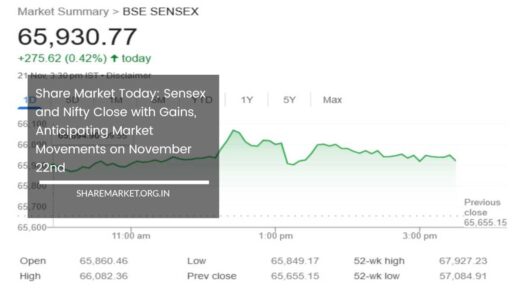Muthoot Microfin IPO Listing Disappointment: Shares Debut 5.5% Below IPO Price

Muthoot Microfin Listing
Muthoot Microfin Disappoints on Listing Day: Shares Debut at 5.5% Below IPO Price
Muthoot Microfin, a prominent player in the microfinance sector, faced an unexpected setback as its shares were listed at a 5.5% discount compared to the initial public offering (IPO) price.
This surprising turn of events on the listing day sparked concerns among investors and stakeholders, prompting a thorough analysis of the factors influencing the company’s stock performance.
In this comprehensive exploration, we delve into the context of the IPO, the dynamics leading to the listing disappointment, and the potential implications for Muthoot Microfin’s future in the financial markets.
IPO Anticipation:
The initial public offering of Muthoot Microfin had generated significant anticipation in the financial market.
As a prominent player in the microfinance sector, the company was poised for a robust entry into the stock exchange, backed by its reputation for providing financial services to underserved sections of society.
Investors were optimistic about the growth prospects of Muthoot Microfin, and the IPO pricing reflected this confidence.
However, the actual listing day revealed a stark contrast to the optimistic expectations, leaving market participants perplexed.
Listing Day Performance:
The shares, priced at a certain level during the IPO, experienced a notable dip as they entered the market, trading at a 5.5% markdown from the IPO price.
This unexpected variance between the IPO price and the actual listing price raised concerns among investors who had participated in the initial offering, prompting them to reevaluate their investment decisions.
The disappointment surrounding the debut was palpable, leading to a surge in trading volumes as investors reacted to the unforeseen market dynamics.
Factors Influencing Listing Performance:
Understanding the factors influencing the listing performance is crucial for investors seeking to make sense of the deviation from anticipated market behavior.
Several elements could contribute to such a discrepancy, including market sentiment, overall economic conditions, and sector-specific challenges.
Examining these factors provides valuable insights into the broader context of Muthoot Microfin’s listing disappointment.
- Market Sentiment and Economic Conditions:The overall sentiment in the stock market, influenced by global and domestic economic conditions, plays a significant role in the listing performance of any company. Economic uncertainties, geopolitical events, and shifts in investor sentiment can collectively impact the demand for newly listed stocks. Muthoot Microfin’s debut occurring during a period of market volatility or economic uncertainty could have contributed to the lower-than-expected listing price.
- Sector-Specific Challenges:The microfinance sector is not immune to challenges, including regulatory changes, fluctuations in interest rates, and the overall health of the financial industry. If the microfinance sector was facing headwinds during the listing period, investors might have been more cautious, affecting the demand for Muthoot Microfin shares. Analyzing the broader industry landscape is essential to understanding whether the company’s listing disappointment is a result of sector-specific challenges.
- Regulatory Landscape:The regulatory environment can significantly impact financial institutions, and changes in regulations governing the microfinance sector could influence investor perception. If Muthoot Microfin faced regulatory challenges or if there were recent regulatory changes affecting the microfinance industry, investors may have factored these considerations into their valuation models, contributing to the lower listing price.
Company-Specific Factors:
Apart from external market dynamics, company-specific factors also play a crucial role in determining listing performance. Examining Muthoot Microfin’s business model, growth prospects, and risk factors provides a more nuanced understanding of why the shares debuted at a discount.
- Business Model:Muthoot Microfin’s business model, focused on providing financial services to the underserved sections of society, has been a key driver of its success. However, if there were concerns about the scalability of this model or if market conditions were evolving in a way that challenged the company’s approach, investors might have adjusted their valuation expectations accordingly.
- Growth Prospects:Investors are typically keen on companies with robust growth prospects. Any indications of slowing growth, a competitive landscape shift, or challenges in expanding the client base could influence investor sentiment. Assessing Muthoot Microfin’s growth projections and comparing them to market expectations is essential for understanding the market’s reaction on the listing day.
- Risk Factors:Every company operates in an environment filled with uncertainties and risks. If there were specific risk factors, whether related to operational challenges, market competition, or other externalities, investors would factor these risks into their valuation models. The extent to which these risk factors were priced into the IPO could have influenced the listing day performance.
Implications and Future Outlook:
The disappointing listing of Muthoot Microfin shares raises questions about the potential implications for the company’s future in the financial markets.
Investors, analysts, and industry experts will closely monitor developments in the aftermath of the listing to gain insights into how the company navigates challenges and capitalizes on opportunities.
- Communication and Transparency:In the wake of the listing disappointment, effective communication from Muthoot Microfin’s management becomes crucial. The company’s ability to address investor concerns transparently and provide insights into the factors influencing the listing performance will shape market perception. Clear communication about the company’s strategic plans, risk mitigation strategies, and commitment to long-term value creation can rebuild investor confidence.
- Adaptation to Market Dynamics:The ability of Muthoot Microfin to adapt to evolving market dynamics will be pivotal for its future success. Whether it involves adjusting the business model, exploring new growth avenues, or enhancing operational efficiency, the company’s agility in responding to market challenges will influence its resilience in the face of short-term setbacks.
- Sector and Macroeconomic Trends:Monitoring sector and macroeconomic trends will be essential for investors assessing the long-term viability of Muthoot Microfin. If the microfinance sector is undergoing a transformation or if broader economic conditions are favorable, the company may find opportunities to capitalize on emerging trends and strengthen its position in the market.
- Investor Sentiment and Market Perception:The listing performance of Muthoot Microfin will inevitably influence investor sentiment and market perception. Continued engagement with investors, roadshows, and proactive efforts to showcase the company’s strengths and resilience can contribute to rebuilding confidence. Moreover, consistent delivery on financial and operational targets will play a crucial role in reshaping market perceptions over time.
Final Thoughts:
In conclusion, the unexpected listing performance of Muthoot Microfin shares serves as a reminder of the inherent uncertainties in the stock market.
Investors, analysts, and industry experts will closely monitor the company’s response to this setback, seeking clarity on the factors contributing to the deviation from anticipated market behavior.
As the market digests this information, the company’s ability to adapt and thrive in a dynamic financial landscape will play a significant role in shaping its future performance.
The coming weeks and months will be crucial for Muthoot Microfin as it navigates the post-listing landscape, addresses investor concerns, and demonstrates its resilience and potential for long-term value creation.
















